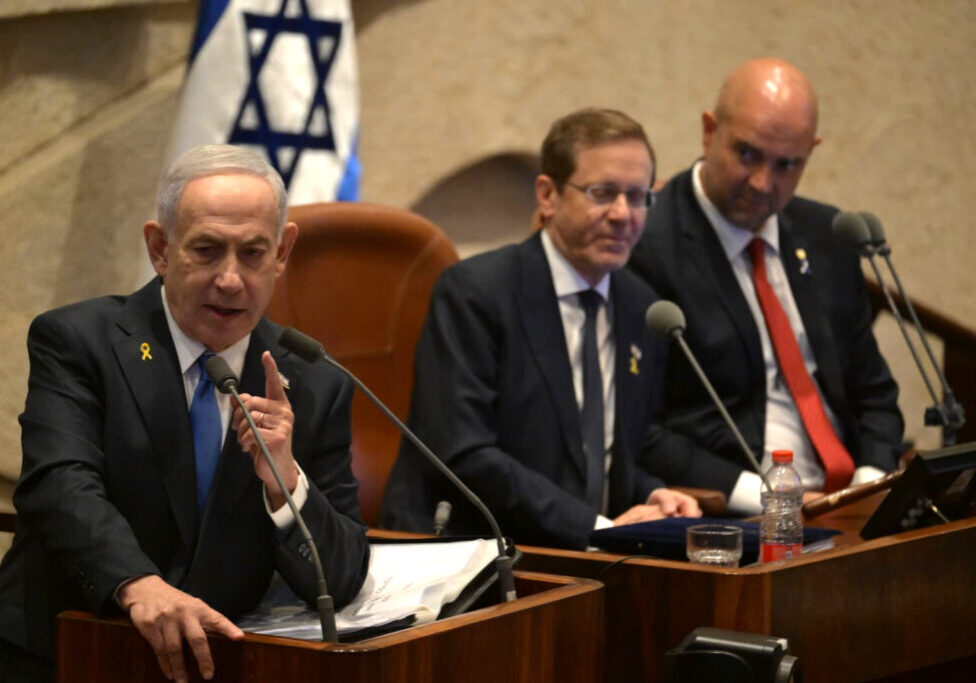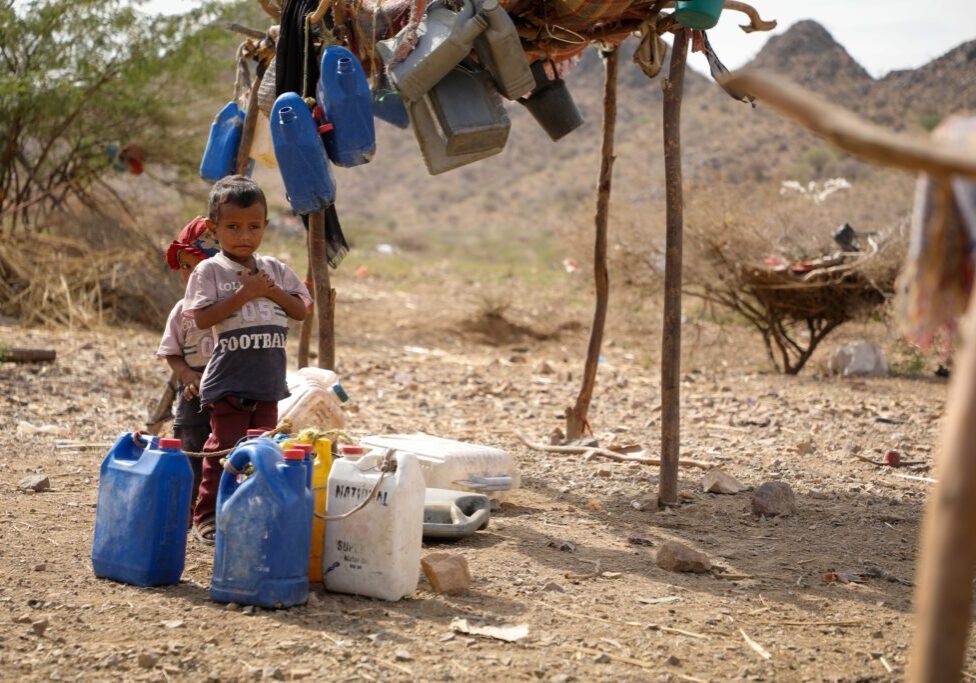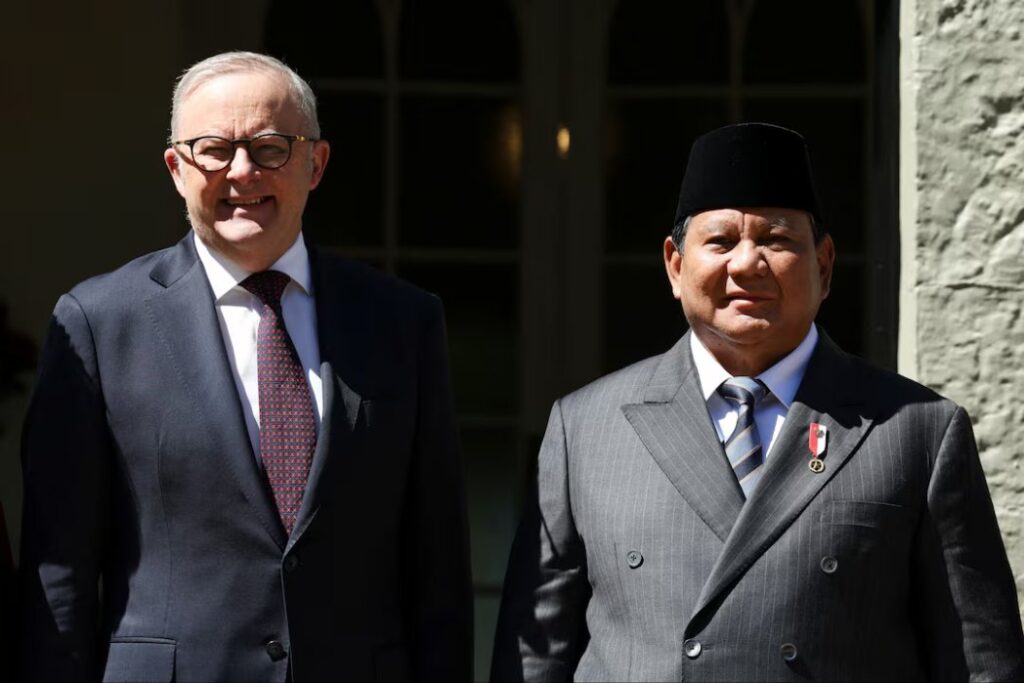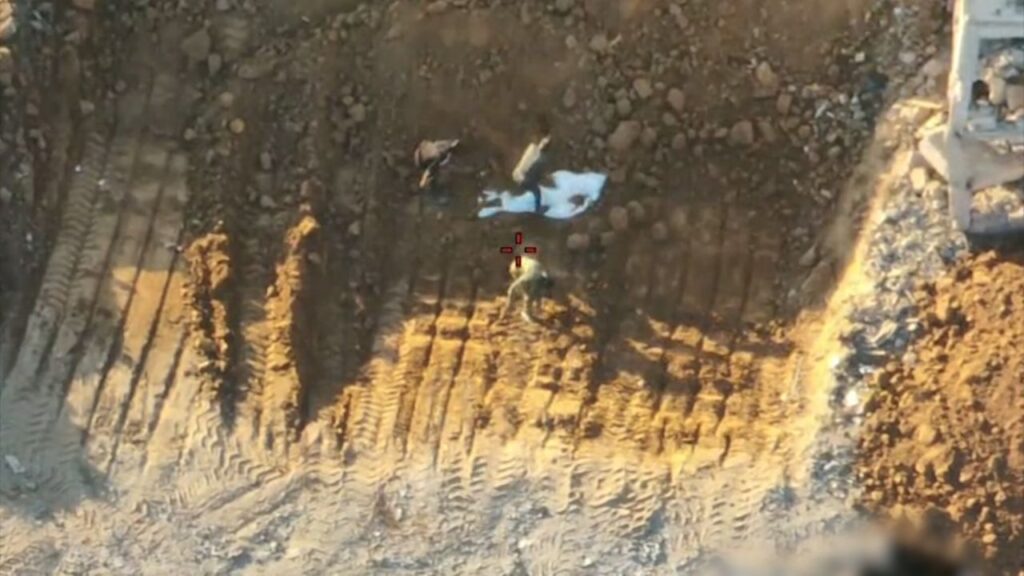FRESH AIR
New revelations: Iran apparently spied on the UN nuclear watchdog
June 2, 2022 | Ran Porat

Documents from Iran’s secret nuclear archive indicate that Teheran stole or had access to secret internal documents of the UN nuclear watchdog, which was trying to supervise its atomic activities and investigate Teheran’s secret efforts to build nuclear bombs.
Iran’s nuclear archive
Some time ago, the Iranians stashed away hundreds of thousands of documents in different formats (paper, electronic files, pictures and videos) on the work completed up till 2006 on Iran’s secret AMAD project to quickly produce at least five nuclear bombs. Secretly keeping this archive was a direct breach of Teheran’s commitments under the 2015 nuclear deal (JCPOA).
More significantly, the archive represents a manual for resuming work on nuclear weapons – work which allegedly stopped sometime in 2003 or 2004 after it was exposed, but in fact continued under different names, under the guise of academic and scientific research.
Israel’s Mossad intelligence agency managed to seize huge chunks of the archive in a bold operation in the heart of Teheran in January 2018. The documents obtained by Israel have since been verified by experts as genuine and constitute irrefutable proof that, despite the ayatollahs’ public denials, Iran’s nuclear program was actively aimed at developing weapons of mass destruction, and Iran is most likely continuing this work today, although in a different form.
The new revelations
In their book, Iran’s Perilous Pursuit of Nuclear Weapons (2021), former UN weapons inspectors David Albright and Sarah Burkhard, both from the Institute for Science and International Security (ISIS) in Washington, analyse many of the archive’s documents provided to them by the Israelis. They conclude that the information found in the archive “show[s] that at times, Iran knew in advance the inspectors’ questions and the facilities they wanted to visit.”
On May 25, 2022, the Wall Street Journal exposed more archive documents that strongly suggest that between 2004 and 2006, the Iranians spied on the International Atomic Energy Agency (IAEA), stealing sensitive documents from the agency. Alternatively, someone within the IAEA at the time may have been assisting Teheran to avoid scrutiny of its illegal nuclear activities by providing it with inside intelligence about IAEA plans.
Asked about the latest revelations, Iran’s Foreign Minister, Hossein Amir-Abdollahian, tried to dismiss them, saying (May 26), “Unfortunately, the Zionists are spreading lies lots of lies.”
In response, Israeli Prime Minister Naftali Bennett has made available (May 31) to the public the original and translated documents which were used by the WSJ, noting that “Iran stole classified documents from the UN’s Atomic Agency @IAEAorg and used that information to systematically evade nuclear probes. How do we know? Because we got our hands on Iran’s deception plan.”
“Middle East intelligence officials”, according to the WSJ, provided the newspaper with documents proving that Iran obtained – most likely by theft – IAEA records containing secret internal information. These documents were later distributed among senior Iranian decision-making officials in charge of the nuclear weapons program. As a result, the Iranians preprepared excuses and false records to enable them to hide the AMAD atomic weapon project from the world.
Comments on several of the documents in Farsi handwriting included notes expressing gratitude to “intelligence methods” for getting the precious information from the IAEA.
Topics in the IAEA documents stolen by Iran
The documents touch on the following aspects and facilities of Iran’s nuclear program:
- Uranium enrichment – a 114-page long set of confidential IAEA reports about uranium conversion obtained by Teheran in March 2004 was sent to Mohsen Fakhrizadeh, the head of Iran’s nuclear weapons project (who was killed, allegedly by Israel, on Nov 27, 2020), his deputy Fereydoon Abbasi-Davani (later the head of Iran’s Atomic Energy Organization, AEOI), Defence Minister Ali Shamkhani and AEOI chief, Gholam Reza Aghazadeh.
The IAEA document circulated in May 2004 includes internal agency reports about Iranian facilities (for example, the uranium conversion plant at Esfahan), sample data from uranium processing factories, nuclear material inventory data and details about nuclear materials sent to Iran from China.
2004 Iranian letter accompanying the 114 page IAEA report stolen by Iran and circulated among senior Iranian officials (translated):
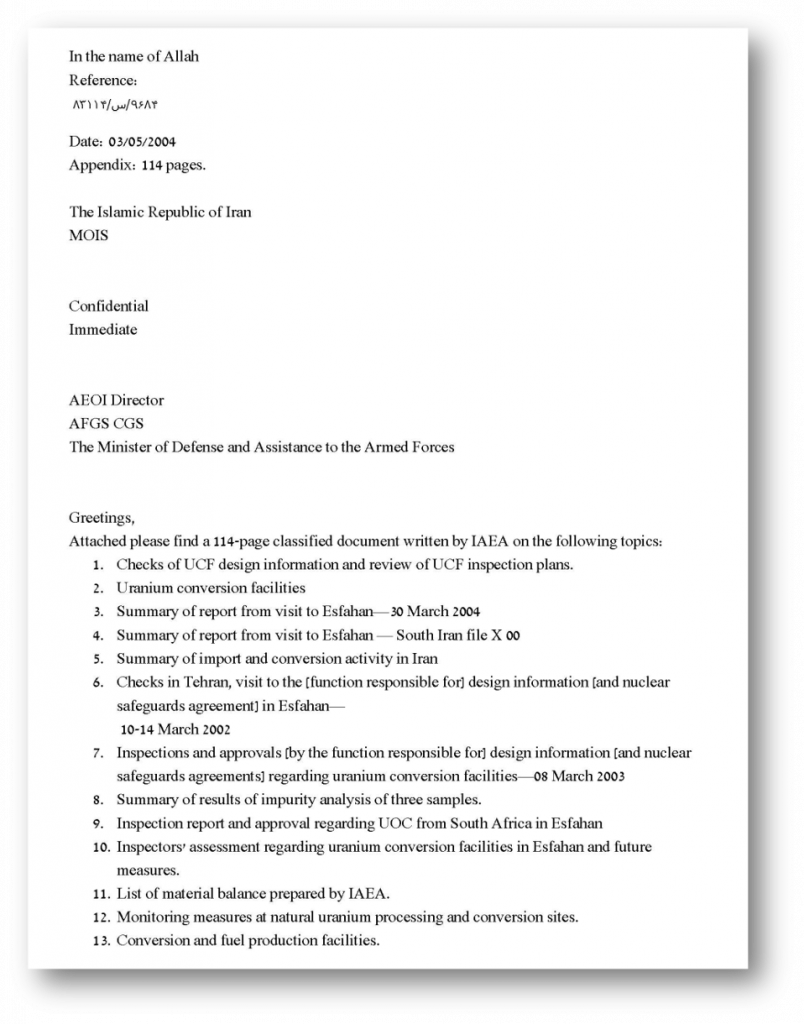

The original letter in Farsi:


The full stolen IAEA report translated into Farsi is available at this LINK.
- The Arak heavy-water reactor – Initially designed to produce and reprocess weapons-grade plutonium, yet Teheran argued that it was a civilian installation for medical and research uses only. On May 19, 2004, Iranian intelligence shared with senior officials, including Defence Minister Ali Shamkhani and Fakhrizadeh’s office, a secret IAEA report about the Arak reactor, scheduled to be inspected by the agency 3 days later.
The UN report included information about Arak, also based on satellite images, and 18 questions the IAEA intended asking the Iranians with regards to Arak. The intelligence body notified the recipients of its message of “Photographs of 27 pages of classified [IAEA] documents on the following topics [Arak] are being sent.”
2004 Iranian cover letter accompanying the report stolen from the IAEA about the Arak heavy water reactor, circulated to senior Iranian officials (translated):
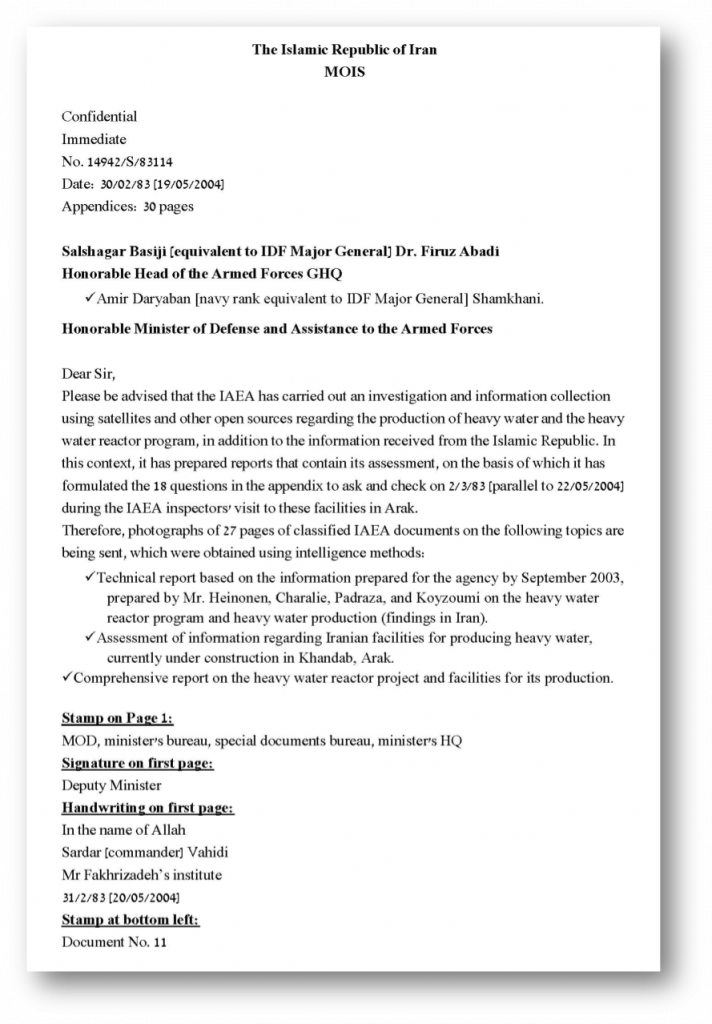

The original letter in Farsi in the folder taken from the nuclear archive:


The full IAEA document stolen by the Iranians and translated into Persian can be downloaded from this LINK.
- The “Green Salt” project – This was a project to convert uranium into uranium tetrafluoride (UF4), a key step in the enrichment of uranium towards military-grade purity (93%). A classified IAEA document, based on information provided by US intelligence organisations and containing the questions the agency planned to ask Iran about the “Green Salt” project, was obtained by Iran in 2006.
2006 Iranian cover letter accompanying the report stolen from the IAEA circulated to senior Iranian officials, including to Fakhrizadeh (translated):
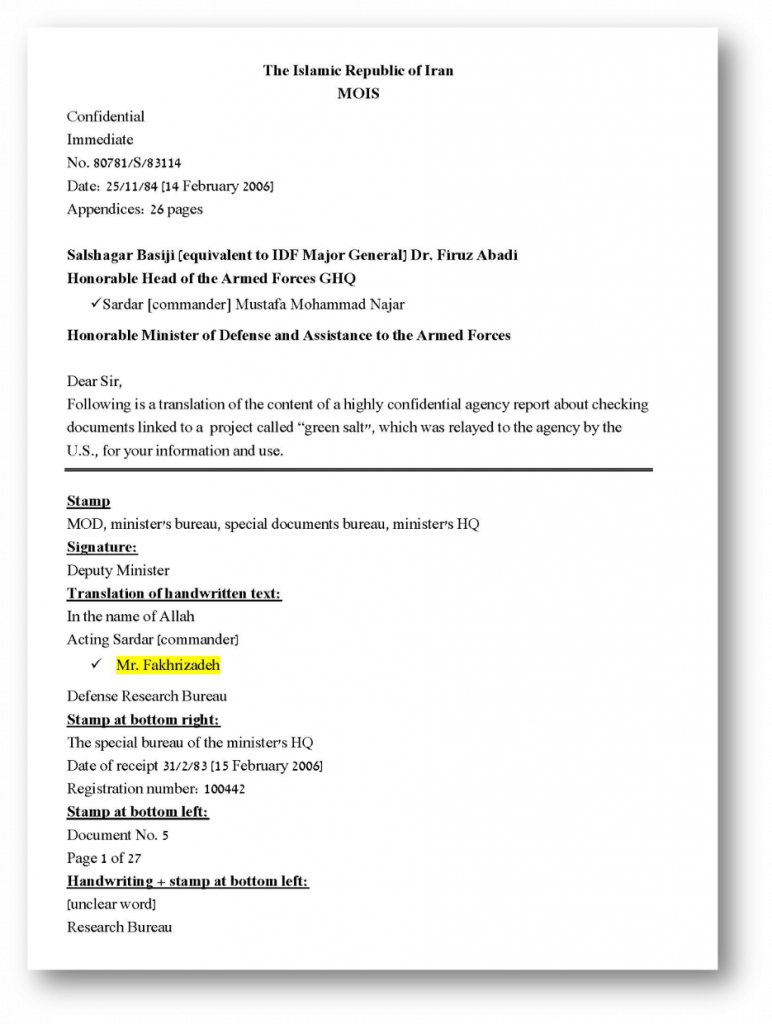
The original letter in Farsi inside a folder from the archive:

The full IAEA document stolen by the Iranians and translated into Persian can be downloaded from this LINK
- Kimia Madan Industrial Group – A company which was part of the “Green Salt” project, and also contracted by the AEOI to develop the Gachin uranium mine and mill, and was originally created by the Ministry of Defence to assist with the weapons program.
In a 2004 handwritten document, a top Iranian official urged (saying: “we must hurry”) Fakhrizadeh to invent a story which would explain changes made in the registration records of the allegedly ‘private’ Kimia Madan company. This was because the IAEA was expected to ask questions about this matter.
In another document, officials are told to change corporate documents regarding the date Kimia Madan stopped operations from 2001 (the real date) to May 2003. The purpose of this change was to enhance Iran’s claim that the mine was not related to the military project, as it was run by a “civilian” company.
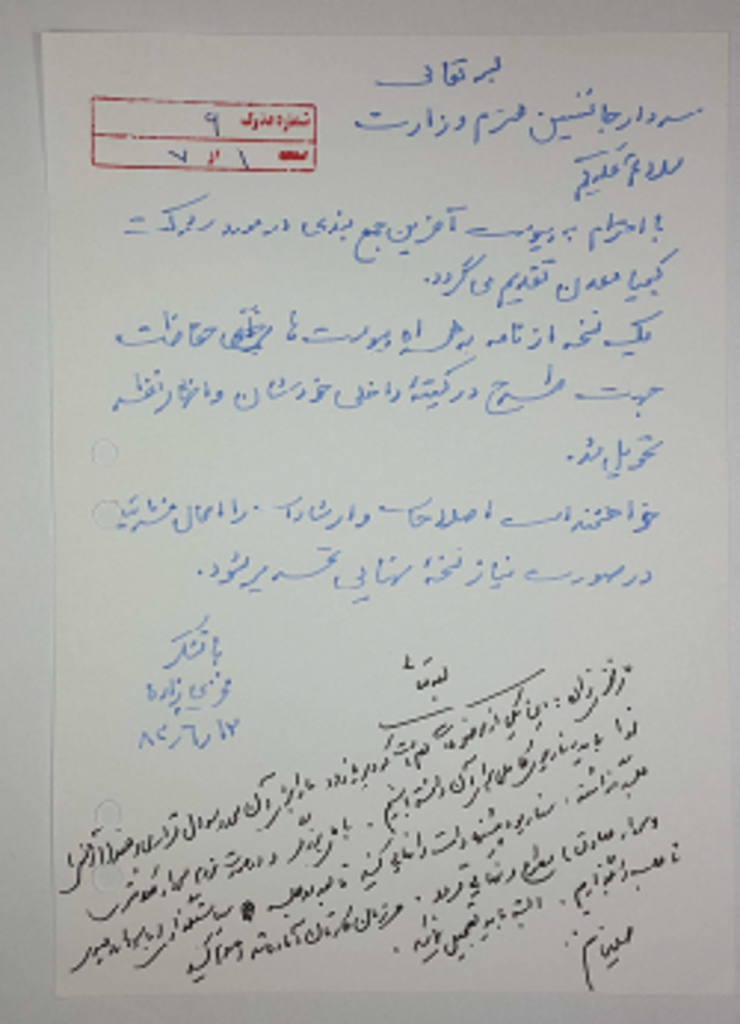
The handwritten comment at the end of the document about Kimia Madan directed to Farkhrizadeh: “Mr. Fakhrizadeh: This is one of the major topics about which they [the IAEA] will ask us sooner or later, so we need to have a comprehensive scenario for it [asks to schedule meetings with relevant people…] Please note that we must hurry.”
- Hiding evidence – a 6-page long Iranian document from September 2005 lists the steps that Iran should take in response to an upcoming IAEA report. In the segment of the document addressing the Lavizan site, which was part of the AMAD project, the letter refers to two “mobile trailers” loaded with radiation-monitoring equipment (whole-body counters). The inspectors were granted access to one of the trailers only, and when they asked where the other one was, the Iranians lied and claimed that it was sold and could not be traced.
It is also worth noting a comment in this document which suggests casual antisemitism – the author of the report notes that the IAEA deputy head at the time, Pierre Goldschmidt “is Jewish”.
The full document, in Farsi and translated into English, is available at this LINK
The latest IAEA report on Iran
Meanwhile, the periodic IAEA report on Iran, made available to IAEA member states days prior to the Board of Governors meeting in June 2022, again points to a major increase in the Iranian stockpile of uranium enriched to high purity. This includes 238.4kg of uranium enriched to 20%, an increase of 56.3kg from March and 43.1kg of uranium enriched to 60%, 9.9kg more than the amount Iran had stockpiled in March.
Iran has already accumulated enough enriched uranium to build 1-2 nuclear warheads within a few weeks, while the ability of the IAEA to effectively monitor the country’s atomic activities continues to be severely limited by the Iranians.
In addition, the IAEA report notes that yet again Teheran failed to supply satisfactory answers to questions put forward by the agency about sites where suspicious man-manipulated uranium particles were detected by IAEA inspectors some years ago now. This is despite recent repeated promises by the Iranians to provide answers about these outstanding issues.
Conclusion
Iran is a pariah state because of its disrespect for human rights, the sovereignty of other states, and its state sponsorship of terrorism. And, these latest revelations about spying on the IAEA only re-affirm that Teheran is ready and able to cross all legal and moral red lines when it comes to rules-based world order by aggressively spying on a UN agency as part of a general policy of cheating and lying to hide its nuclear weapons aspirations. Such deceitful behaviour is continuing today, as the current head of the IAEA, Rafael Grossi, confirmed recently.
With negotiations with Iran to achieve a new JCPOA going nowhere, the only sensible option seems to be to increase the pressure on Teheran to come clean about its past lies.
Dr. Ran Porat is an AIJAC Research Associate. He is also a Research Associate at the Australian Centre for Jewish Civilisation at Monash University and a Research Fellow at the International Institute for Counter-Terrorism at the Reichman University in Herzliya.
RELATED ARTICLES

“Bittersweet” aftermath of hostage release deal: Joel Burnie on Sky News




